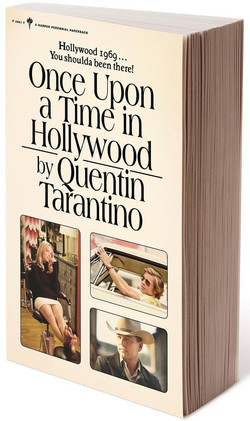In this age of multimedia franchises, movie adaptations of best-seller books are everywhere, while interestingly, the opposite — novelizations of acclaimed movies — seems pretty rare. Movie novelizations of action-packed sci-fi and thriller hits dominated book stores until the previous century; where did all these novels go? Did these books fail to gain as much popularity? Did these books fail to gain as much money? Or both? Currently, book adaptations of movies can’t live up to the movie both in fame and money mainly because of two reasons.

The first problem that movie novelizations face is the inconsistencies between the novel and the movie. Most of the time, the author of the adaptation is not someone who participated in the production of the movie, which can lead to contradictions to the original work. The best example of this are the Star Wars novels where even the creator, George Lucas, has said, “that’s a different world than my world.” In movies, the characters’ emotions and thoughts are often not explicitly shown, while novels can describe their exact emotions and thoughts to the readers. This inner perspective is a strength that books hold over movies, but it becomes the hardest part to interpret in the adaptation. Without knowing the exact intent of the original creators, the book adaptation may essentially become a fanfiction for the movie, just like how the Star Wars novels turned out.
The second problem is the fundamental difference between books and movies. Imagery in a book relies heavily on how articulate the author is and how imaginative the reader is. For movies, imagery is much easier; it’s just there on the screen. Because of this, there is room for interpretation for movie adaptations of books when fleshing out details, but this is not true for the opposite. While movies can show much more visual and auditory details in a shorter time frame, books take much more space to deliver the same amount of detail. This inherent difference in media makes book adaptations of movies inferior in terms of detail to its original content. People will remember the movie much more clearly, inevitably making comparisons between the movie and the book.
Each different type of media has their own strengths and weaknesses, making cross-media adaptations full of products with distinctive fortes. But the two major challenges movie novelizations face make it difficult for books to demonstrate their merits over movies, while other types of adaptations — book to movie, movie to games — do not suffer from these issues.
So, are movie novelizations doomed to be inferior copies of movies? If certain conditions are met, book adaptations can give readers a completely new experience compared to their movie counterparts. Book adaptations of movies by Quentin Tarantino and Makoto Shinkai are perfect examples of movie novelizations done right. Tarantino’s novelization of his most recent film, Once Upon a Time in Hollywood, builds up more character backstory and personality that Tarantino could not explore in the movie due to the flow and runtime of the movie. Shinkai also has written adaptations of his animated features, which, too, include more characters and details the movie could not provide. For example, the novelization of Shinkai’s The Garden of Words, originally a 30-minute short animated feature, includes several new chapters with insights into the main characters’ families and the characters’ motivations. These books have two common elements that make them successful. First, the director of the movie is the author of these books, which allows the book to be faithful to the movie. Second, the books have new content that allows people who have watched the movie to enjoy the book despite the comparative lack of visual details. With these conditions, Tarantino and Shinkai’s adaptations overcame problems that movie novelizations normally suffer from.
Tarantino’s Once Upon a Time in Hollywood: A Novel debuted at number one on the New York Times Best Seller List. This could be purely because of the movie’s and Tarantino’s fame, but the fact that a movie novelization reached number one holds significance. If creators of multimedia franchises paid more attention to the strengths and weaknesses of the type of media chosen, new experiences could be provided that play on the advantages of each.

